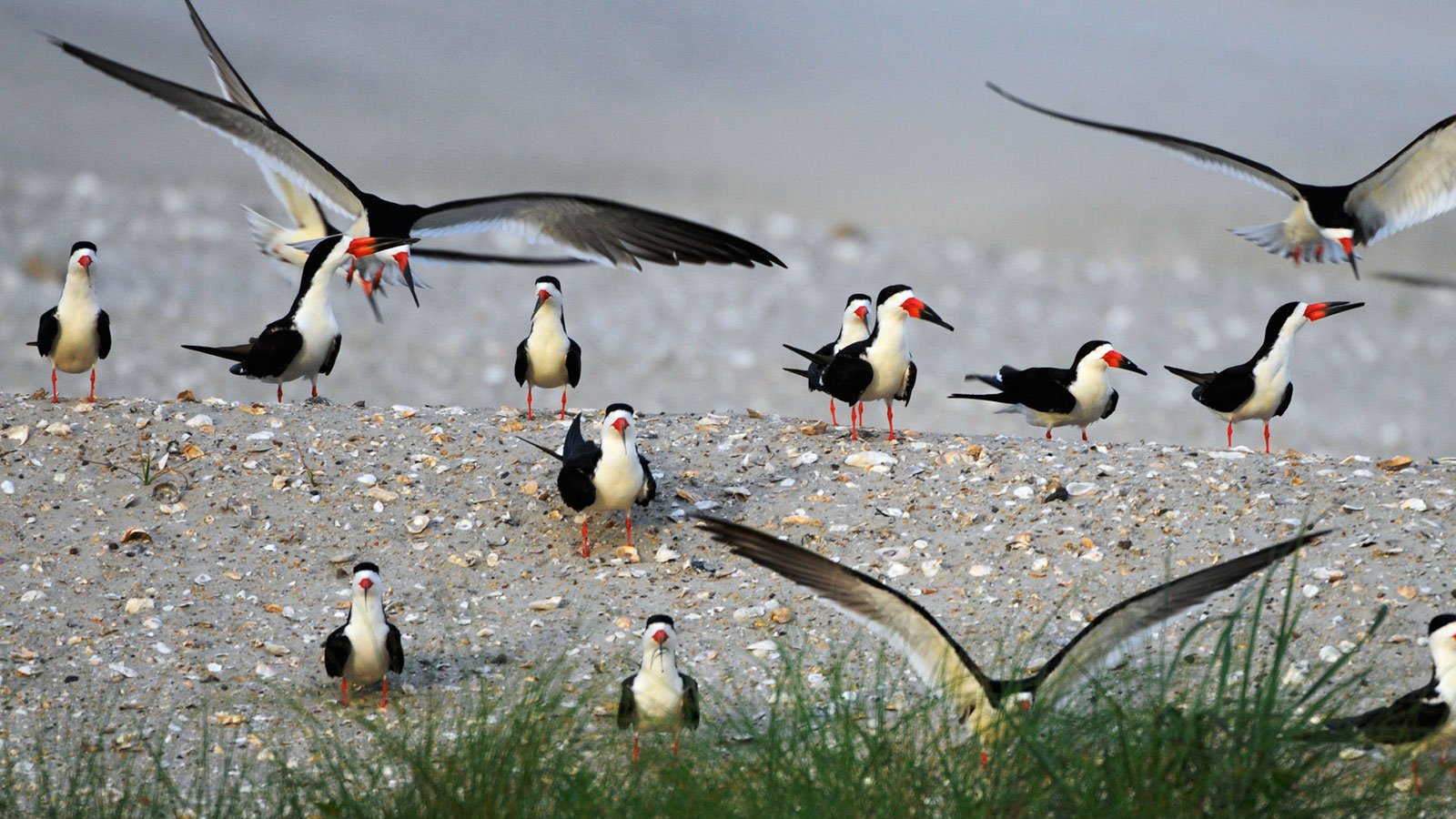In spring, many shorebirds such as Wilson’s plovers and black skimmers lay eggs in shallow nests on southern beaches.
“And they’re just little divots in the sand where birds can lay their eggs,” says Timothy Keyes of the Georgia Department of Natural Resources.
He says the eggs are often in danger of washing away in a storm, getting eaten by foxes or raccoons, or being disturbed by people.
Sandbar islands provide critical habitat for beach-nesting birds because they’re out of reach of most predators and people. But these islands are especially vulnerable to flooding and storm surges.
And as seas rise, the risks are growing.
“I’ve been working on the coast for 10 years and just in that timeframe, I’ve seen a real loss in the quality of habitat for beach-nesting birds,” Keyes says. “This year, for example, we essentially had no black skimmer productivity on the coast of Georgia, no gull-billed tern productivity, quite limited least tern productivity.”
So Keyes’s department is working with the Army Corps of Engineers to build an island for the birds in Georgia’s Altamaha Sound. They’re making it high enough that the nests are unlikely to wash away.
“We need to move pretty quickly to provide suitable habitat over the next decade,” Keyes says.
Reporting credit: ChavoBart Digital Media
Source link


